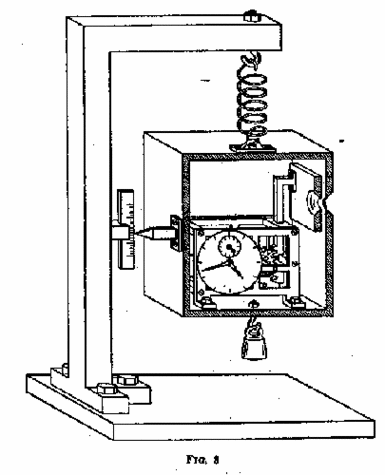-
 Cyst
Cyst
-
 Flood plain
Flood plain
-
 Antiepileptic
Antiepileptic
-
 Olivine
Olivine
-
 Residual deposit
Residual deposit
-
 Schrödinger's cat
Schrödinger's cat
-
 RPG
RPG
-
 Hydrogeology
Hydrogeology
-
 Axial skeleton
Axial skeleton
-
 SELL
SELL
-
 Exogenous
Exogenous
-
 Internal ear
Internal ear
-
 Serum
Serum
-
 Cervical dysplasia
Cervical dysplasia
-
 Isoleucine
Isoleucine
-
 Ozonosphere
Ozonosphere
-
 Papilio phorbanta
Papilio phorbanta
-
 Natural disaster
Natural disaster
-
 Chimeric genome
Chimeric genome
-
 ESA
ESA
-
 Right ascension
Right ascension
-
 Propolis
Propolis
-
 Bile acid chelator
Bile acid chelator
-
 Metalloenzyme
Metalloenzyme
-
 MIDI
MIDI
-
 Food additive
Food additive
-
 Transparent
Transparent
-
 Private key
Private key
-
 Recycling
Recycling
-
 Actin
Actin
Einstein's box
Einstein imagined his box in 1930 to violate the Heisenberg energy-time inequality. He was hoping to show that the so-called Copenhagen interpretation of quantum mechanics proposed by Niels Bohr was incorrect.

Niels Bohr.
According to Einstein, all that was needed was a box with perfectly reflecting walls containing a clock that activated a small lever opening a gate at a given time. A photon of unknown energy was trapped between the walls of the box which was suspended by a spring allowing it to be weighed by measuring the spring's extension. Now, according to the special theory of relativity all forms of energy have a mass and therefore a weight. At the moment when the clock opens the gate, the photon leaves the box which, becoming lighter, rises. The difference in weight gives the energy of the photon, and precisely at what moment a quantum system has a given energy will have been measured.

Diagrams of Einstein's box. (Credit: Niels Bohr).
According to the fourth Heisenberg inequality,
>
h4 pi" alt=" " /> , one of the pillars of the Copenhagen interpretation, this is impossible!
It is not possible for a quantum system to have a precise energy at a time t. All that can be known is that the product of the dispersion of energy measurements on the system in a given time interval should not be smaller than the Planck constant divided by 4π. If a precise energy is to be assigned to a system, it is impossible to say at what moment it had this energy. Conversely, if an increasingly short short time interval is used, the system could have an increasing amount of energy during a measurement. This will be completely random!
Bohr was shaken and Rosenfeld recalls that, while Einstein quietly went home to his flat at the end of the day, with a certain smile even, Bohr went back to his hotel room at the end of the day's conferences in a state of great excitement.
The next day Bohr arrived for a new day's debating completely calmed. To measure the weight of the box without the photon, the extension of the spring had to be measured thereby introducing the other Heisenberg inequalities covering position and velocity. But above all, because of its change in altitude in the Earth's gravitational field, the time measured by the clock did not flow at the same rate, as a certain Albert Einstein had shown 14 years previously. The creator of general relativity had forgotten his own theory!
In taking into account all these effects, the time-energy inequality that Einstein thought he had thrown out of the window had staged a triumphant return through the front door, and quantum mechanics was saved, more unshakeable than ever!
This type of box, and the technique for detecting the presence of a photon inside it without destroying it, is now being created in quantum optics experiments.
Latest
Fill out my online form.



